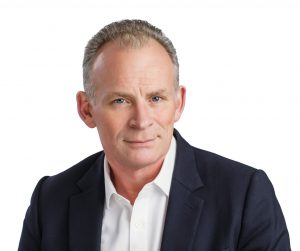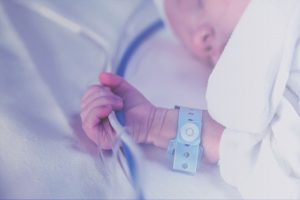Since its founding in 2014, genomic data analysis, interpretation, and reporting company Congenica has honed its decision support and analysis engine via its partnership with Genomics England and the country’s National Health Service (NHS). With a new partnership with U.S.-based precision medicine leader Sanford Health and fresh off an equity financing round in late 2020, company CEO David Atkins recently took time to chat with Clinical OMICs Editor in Chief Chris Anderson about the company’s plans and his views of the genomic medicine landscape.

Chris Anderson, Editor in Chief, Clinical OMICs:
Can you bring us up to speed on the most significant developments for Congenica over the past five years or so?
 David Atkins, CEO, Congenica: The big defining event for us was being selected as the exclusive partner for Genomics England—that was our first major commercial success and is ongoing. Genomics England was a subsidiary of the NHS that was set up to develop the infrastructure for genomic medicine. We are handing [our platform] over to the NHS who will run it as a routine rare disease diagnostic for all patients in England. The official announcement for that go-live will happen over the next few months. Like so many things, that got delayed by the pandemic but is all moving forward now.
David Atkins, CEO, Congenica: The big defining event for us was being selected as the exclusive partner for Genomics England—that was our first major commercial success and is ongoing. Genomics England was a subsidiary of the NHS that was set up to develop the infrastructure for genomic medicine. We are handing [our platform] over to the NHS who will run it as a routine rare disease diagnostic for all patients in England. The official announcement for that go-live will happen over the next few months. Like so many things, that got delayed by the pandemic but is all moving forward now.
What we continue to learn is building a system for application in the real world—to be able to apply whole-genome based diagnosis—is a complex challenge. The benefit Congenica has in our partnership with Genomics England is it has allowed us to build a robust, high-quality, predictable system. We leveraged that capability by starting to sell the platform more broadly. Today, we have customers in 20 countries, all of whom are using our system through various deployments for the diagnosis of rare disease.
As you have broadened your reach, what lessons have you learned?
Atkins: You may have heard people talk about the centralized, or decentralized models. One of the elements that has become important about the way we engineered our platform is we have designed it to be deployable either via the cloud, or as an on-premise platform—to be able to put it on the servers of our customers. As the value of genomic data becomes more and more appreciated with ministries of health, hospitals, and governments around the world, the ability to run the system on their own servers has become really important. Our ability to do this has given us commercial opportunities.
People in precision medicine understand the value of genomic data, but even a few years ago not many hospital systems had their own molecular lab capabilities. Are you still seeing that?
Atkins: If you look at the big academic medical centers and tertiary hospitals, many of them will have their own cytogenics, molecular pathology (labs) and so on. When you get into the less sophisticated secondary care centers, they are sending their samples to a private commercial lab or they are sending it to one of the tertiary centers.
What is happening now from a DNA sequencing point of view, is there is such a huge range of outsourced sequencing partners globally, that centers now are starting to access sequencing capability they weren’t able to access previously. That is the opportunity that we are pursuing, where you have institutions that can get access to patient exome sequence data, primarily, and they are saying: “We want to be able to analyze those ourselves. We don’t want to outsource the entire process.” So, our ability to set the system up in a customer’s hands so they can do the analysis and the reanalysis themselves, if that is of interest to them, is really important.
Have you seen an uptick of lower-tier health systems adding genomic capabilities?
Atkins: It is a mix. The whole process begins with outsourcing the sequencing and getting comfortable with analyzing the data. The next step, as they anticipate volumes picking up, is to endure the capital equipment purchase that it takes to set up in-house sequencing. I think that hurdle is quite a big one and the capital equipment comes with quite a big ticket on it. The other issue is getting the service contracts, or the staff, to run it. I think the outsourcing of sequencing is going to continue to grow, because it is one of those services where scale trumps everything and if you are running thousands of genomes, the economies of scale kick in.
Congenica raised more than $50 million in a financing round late last year. How are you planning to deploy that capital?
Atkins: It will serve two major purposes. One is to rapidly increase our commercial footprint so we can expand beyond the 20 countries, but also build scale within each of those 20 countries. We announced a new chief commercial officer and he is building the direct sales force in a number of countries—in the U.S. and also in Europe— and we are also building a network of distributors and agents around the world. We really ramped up our commercial capability and are starting to see the benefits of that.
Application number two was to accelerate the plans we had for somatic cancer. The platform we have on the market today is good for rare disease and inherited cancer—inherited cancer is about 10% of all cancers. Somatic cancer presents a different challenge, which is around identifying which of the available targeted therapies a patient should be eligible for.
We did a fair amount of market research in 2018 and 2019 to determine whether there was a need there we could fulfill. The feedback was yes there was a need for a clinic-first platform: something that could be used for clinical decision support and decision making; something that could be decentralized so customers could run it themselves, keep the data themselves, and create their own localized databases; and something that is high quality.
We are now headed down the path of our product being software as a medical device. The FDA has made it very clear that platforms like ours and our competitors’, that the applications should be viewed as medical devices, so we have always laid the foundation of having the right qualification to develop medical device software. We anticipate the next opportunity for us is CE-marking in Europe in the next few weeks. We already have the U.K. (approval) for the qualification required for the NHS and we now expect to begin engaging the FDA.
For your planned somatic cancer offering, where will you be deriving your data?
Atkins: That is for us to confirm over the coming weeks. We have announced a partnership with a new company called Gabriel Precision Oncology, a spin out from a very well-known cancer center in Glasgow called the Beatson Institute. The principal behind that is a pancreatic cancer surgeon, Andrew Biankin. What they have provided to us is quite a unique bioinformatic pipeline and they will help us develop the reference data for interpreting the variants that you see in the tumor DNA.
If you look at the eight oncology platforms that are out there today, each of their gene panels and variant data that they use are overlapping to a certain extent. But there are some major omissions in what they should be looking at. We have the benefit of perhaps another year or so worth of cumulative knowledge to be able to design a gene panel and reference data that reflects the current thinking around what is the information you need to provide to be able to get good use of the targeted therapy.
How do you intend to serve this data to oncologists to allow them to make the best decision for the treatment of their patients?
Atkins: There are four important areas that all begin with the platform design. The way we create a user interface and allow the use to work through their decision mimics the way a clinical geneticist looks at the data—the way that the data flows on the user interface reflects the way they think. We will design the somatic platform to reflect the decision-making process that pathologists and clinical scientists use.
 The second element is it will be decentralized. Rather than sending a sample to one of the centralized services like Tempus or Foundation Medicine, we will allow our customers to run the platform in their own institution either served to them (in the) cloud or as on-premise. That allows them to do unlimited analysis, and if they decide the next day they want to go back and ask another question, they can do that.
The second element is it will be decentralized. Rather than sending a sample to one of the centralized services like Tempus or Foundation Medicine, we will allow our customers to run the platform in their own institution either served to them (in the) cloud or as on-premise. That allows them to do unlimited analysis, and if they decide the next day they want to go back and ask another question, they can do that.
The third element (addresses) the complexity of extracting and analyzing DNA from fixed tissue. This has been a known problem for about 20 years since DNA gets modified in FFPE. We have developed a pipeline that accommodates for all of those artifacts that come from that tissue and built that into our system.
The fourth and final element is that there is a lot of evidence now that suggests there is a type of variation driven by structural variants that isn’t reflected in the panels that are available today. It is thought the structural variants can account for some of the false positives where a patient is expected to respond to a particular therapy and then they don’t. Structural variants aren’t 100% of the reason, but they are an important contributor to understanding the tumor and how a patient might respond to a targeted therapy.
You also recently announced a partnership with Sanford Health here in the U.S. Tell me a bit about that.
Atkins: This came about through a couple of meetings we had with one of the thought leaders at Sanford, David Pierce. David’s and Sanford’s vision is all about how do they take precision medicine and personalized medicine and make it routine across their entire network. Our vision for Congenica is to make genomic medicine routine and integrated into healthcare. When we met David and told him that we were looking to make the complex simple and looking to be able to deliver relatively sophisticated analysis in a way that would allow pretty much anyone with a reasonable level of capability to be able to deliver it, it resonated with what they are trying to do.
Their plans are to provide routine personalized medicine, but also do some relatively cutting-edge research in a number of disease areas that we are able to support them in. This is the beginning of a partnership where we will start doing routine analysis, but we will also announce in the coming months how can we discover new insights into certain disease areas from patients within the Sanford network.
How important is it for genomic data to be integrated directly into the electronic health record?
Atkins: Our vision and mission is about routine and integrated data. We believe for genomic medicine to become routine it has to be integrated upstream so data can be entered to drive the genomic analysis. Now it might not be returned as a file that sits in the EHR but it has to be accessible.
I think the extension of that is when we get to the point that the number of people who get sequenced becomes significant. I can see that data is going to sit in the EHR for the duration of their life. If they are part of a newborn screening program, that data is there and is incredibly valuable so why not put the variant file, which is not going to change, into their electronic health record and every time there is a question that may have a genetic basis, you go back to the EHR and interrogate the data. We are planning by virtue of our automation for that to be done in a routine secondary care setting and, ultimately, in primary care.

You can imagine you have your genome sequenced to look for inborn errors of metabolism and then 50 years later you are eligible for a statin—or whatever the equivalent will be 50 years’ time— so you run a query on the PGx profile and all that data will be sitting there and you won’t need to go and have your genome sequenced again unless it is a tumor sample.
For genomics to become routine and integrated it absolutely has to live within the existing patient medical record system. If we try to make it a separate stand-alone system, I think it is always going to remain separate and stand alone.













